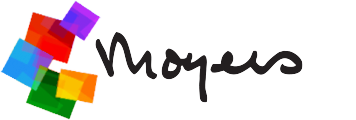
President Donald Trump joins Vice President Mike Pence (left) and Gen. James Mattis, secretary of defense, in the Hall of Heroes at the Department of Defense in Arlington, Virginia, on Jan. 27, 2017. (Photo by Olivier Douliery/Pool via Bloomberg)
I recently wrote a post for BillMoyers.com about an online course developed on Coursera by my colleagues at Stony Brook University and the University of Hong Kong. That course, “Making Sense of the News,” presents our model of teaching news literacy — an academic discipline that, as a subset of media literacy, focuses squarely on understanding news.
Over the next few months, I’ll highlight some of the concepts covered in the course, using recent news to help you develop your own filter for discerning whether a piece of information merits being called news. To do so, we start at the beginning, looking at what “news” means to us today.
One of the most prevalent issues that makes news literacy so important is the challenge of the overarching disintermediation of the media and news. Before the internet and smartphones, we had to actively seek out news by going to the newsstand and picking up a newspaper, or tuning into the evening newscast to learn the news of the day. There were a number of gatekeepers of information, including journalists, editors and news directors, who determined what was deemed newsworthy and relevant.
Today, however, the internet has democratized media and given everyone the tools to create and distribute information to a mass audience in a split second. While this certainly gives people access to voices and opinions we haven’t been exposed to before, it also has put the onus of determining those voices’ credibility on the consumer, not the creator, whose motives for creating and distributing information aren’t always as clear and aren’t always driven by a set of universal standards.
In our course, we define news as: “Information of some public interest that is shared and is subject to a journalistic process of verification, and for which an independent individual or organization is directly accountable.”
For simplicity’s sake, we focus on three key words in that definition — Verification, Independence and Accountability. By looking for these three things, we can determine whether the information presented is reliable enough to allow people to take action on it, such as sharing it with others.
Here are examples that show how to apply the tenets of VIA. This weekend, President Trump signed an executive order that called for banning both refugees and citizens from seven Muslim-majority countries. As details unfolded, chaos reigned as visitors from abroad were detained at US airports. It also became apparent that in signing an executive order, Trump had bypassed the normal practice of debating the policy’s merits with members of the House and Senate, who provide checks and balances to the process of governing.
One of the first stories on the ban came from The New York Times, headlined “Trump Bars Refugees and Citizens of 7 Muslim Countries.” The article details the executive order and includes quotes from President Trump, as well as viewpoints from human rights activists who call the order “harmful” and a “euphemism for discriminating against Muslims.”
Putting the article and the publication through a VIA filter, we find evidence of each:
Verification
The author verifies quotes from the president by attaching a video of him speaking at the Pentagon, and also links to a video interview given by Trump to the Christian Broadcasting Network.
Independence
The New York Times is a well-established news outlet that has published the news of the day since 1851. The paper maintains a list of standards and ethics and professional guidelines which are publicly available on its website.
Accountability
Each news story published by The Times includes the author’s name. The Times also makes clear corrections to stories after publishing and maintains the position of a public editor — an independent evaluator of both the reporting and the editing process of stories published by the paper. The public editor also answers inquiries from readers both on social media and in columns published by The Times.
While it is true that they are prone to the occasional mistake, we regard the level of the checks and balances that are part of the newsgathering process at The New York Times as the gold standard.
Another example: The Vox Media company. Vox is a digital media company that publishes solely online through its publications The Verge, Vox and SB Nation, among others. Stories from Vox-branded publications pop up frequently in social media feeds and through online aggregators of stories, including Google News and Apple News. Does Vox hold to the same standards of VIA as The New York Times?
Let’s take a look. The top story on the Vox homepage is a lengthy profile of Stephen Bannon, President Trump’s chief strategist, who has played a large role in outlining Trump’s agenda — including the executive order barring refugees from entering the US. The story features evidence including direct quotes from Bannon on creating the “anti-establishment” populist news site Breitbart.com, linked from a number of other publications.
Putting this story and the publication through the VIA filter we can determine the following:
Verification
The Vox story provides links to a number of other publications that have interviewed and published stories on Bannon and his temperament. However, the story itself provides little if any original reporting.
Independence
The Vox Media Values page specifies the need to “demand quality” and “take risks.” They note, “We hold ourselves accountable and hold our teammates to high standards.” This can indicate newsgathering standards, but they don’t exactly clarify what those standards are.
The company’s explainer page also emphasizes advertising, calling Vox an expert storyteller for brands and detailing how advertisers can utilize all of Vox’s publications.
Accountability
Each story prominently features the author’s name, as well as his or her Twitter handle and email address. In the past, Vox publications have published corrections to stories that have contained errors.
While Vox Media brands don’t always hold all three standards for news, the sites can be a useful to gather context around big issues and stories. But the company should be seen as a supplement to other publications, not one’s sole source of information.
Finally, it’s important to note that VIA is just one tool a news consumer needs to understand the world of news and information today. You can learn more about news literacy and its other concepts by visiting our website at Centerfornewsliteracy.org. I’ll be back soon for the second installation of “Making Sense of the News.”




